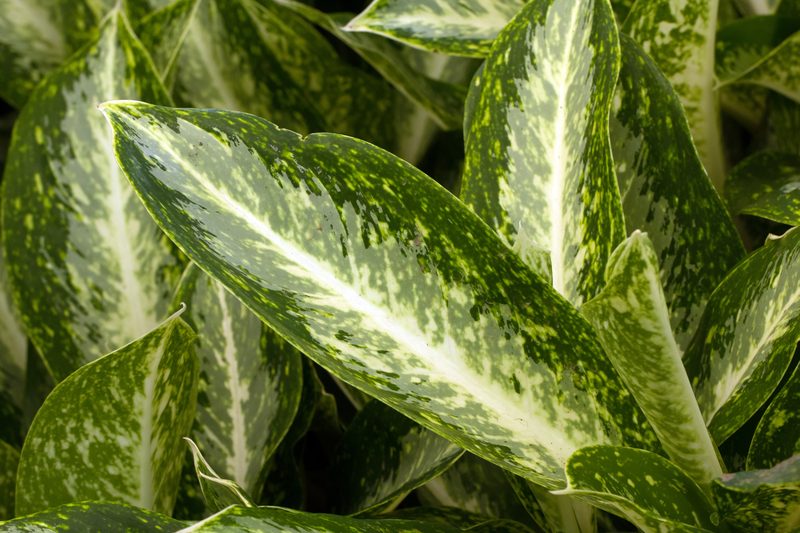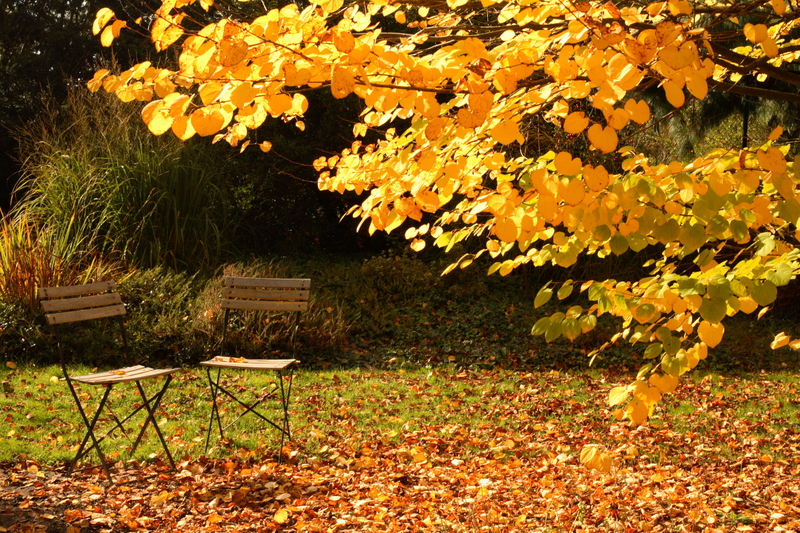A UK Gardener's Dream: Growing Exotic Tropical Plants At Home
For many UK gardeners, the allure of growing exotic tropical plants at home is irresistible. The vivid colors, lush foliage, and unique forms of these plants can transform even the most modest space into a vibrant oasis. While the British climate poses significant challenges, with the right know-how and a dash of enthusiasm, even novice horticulturists can enjoy a slice of the tropics right in their own garden, conservatory, or living room. This comprehensive guide will arm you with the practical tips, plant ideas, and inspiration needed to turn your dream into lush, leafy reality.
Why Grow Tropical Plants in the UK?
Growing exotic and tropical plants in the UK offers several benefits beyond mere aesthetic pleasure:
- Unique Visual Impact: Tropical plants have dramatic leaves and vibrant flowers that create standout focal points.
- Biodiversity Boost: They attract pollinators and increase biodiversity in the garden.
- Personal Satisfaction: Successfully nurturing a rare plant can be deeply rewarding.
- Year-Round Interest: Many tropical species offer colour, texture, and fragrance even in colder seasons.
In this article, you'll learn:
- The best tropical and exotic plants for UK conditions
- Essential growing tips for lush results
- Secrets to overwintering and protecting tender species
- Creative design ideas for indoor and outdoor spaces

Understanding the UK Climate Challenges
The United Kingdom's climate is classified as temperate maritime: relatively mild but prone to sudden cold snaps, extended periods of rain, and occasional drought. Frost, short summers, and a lack of sustained warmth can spell trouble for truly tropical species, which are evolved for steady warmth and high humidity. However, with a little ingenuity and preparation, UK gardeners can still embrace a surprising number of tropical, sub-tropical, and exotic plants.
Microclimates: Your Secret Weapon
Every garden has its microclimates--small pockets that might be warmer, more sheltered, drier, or sunnier than the rest. By exploiting these areas, you can successfully grow more delicate tropical species. Consider these factors:
- South-facing walls absorb and reflect heat
- Raised beds drain more efficiently and warm up faster in spring
- Enclosed patios and courtyards trap heat and shelter plants from wind
- Greenhouses, cold frames, and conservatories expand your growing options
Tip: Plant frost-tender exotics in pots, so you can move them indoors when needed.
Outstanding Exotic Tropical Plants for UK Gardens
Here are some tried-and-tested tropical and exotic plants that thrive in British gardens, patios, and homes:
1. Hardy Banana (Musa basjoo)
- Hardiness: Can survive temperatures as low as -10?C with protection
- Appearance: Large, dramatic leaves and rapid growth
- Care: Mulch heavily in winter, keep moist in summer, shelter from winds
2. Giant Gunnera (Gunnera manicata)
- Perfect for: Boggy spots, pond edges, and large gardens
- Leaves: Mammoth, architectural, can reach 2m wide
- Requires: Consistent moisture and protection from harsh winds
3. Cannas
- Hardiness: Hardy in mild UK regions, or overwintered indoors
- Flowers: Exotic, vivid blooms in red, orange, and yellow
- Tip: Dig up rhizomes before first frost for storage indoors
4. Tree Ferns (Dicksonia antarctica, Cyathea spp.)
- Winter Protection: Mulch the crown, use horticultural fleece in very cold snaps
- Visual Impact: Furry trunks and arching fronds create lush, ancient forest vibes
- Growing position: Partial shade with consistent moisture
5. Gingers (Hedychium and Zingiber varieties)
- Fragrance: Highly scented tropical flowers in late summer and autumn
- Protection: Mulch heavily or overwinter indoors
- Use: Excellent in large containers or sheltered garden beds
6. Bird of Paradise (Strelitzia reginae)
- Indoor tropical plant for UK homes, best grown in bright indirect light
- Flowers: Iconic 'crane-like' blooms
- Tip: Move outdoors in warm summer months for a Mediterranean feel
7. Colocasias & Alocasias (Elephant Ears)
- Foliage: Striking, oversized leaves--perfect for creating instant jungle allure
- Ideal for: Containers or moist, sheltered beds
- Winter: Bring inside or keep tubers dry in frost-free storage
8. Passion Flowers (Passiflora spp.)
- Vine: Lush, fast-growing climber with exotic, intricate flowers
- Hardier varieties like P. caerulea can survive UK winters
- Use: Grow on fences, trellises, or pergolas for a tropical flourish
9. Palms (Trachycarpus fortunei, Chamaerops humilis)
- Why palms? Indispensable for authentic exotic gardens
- Hardiness: Windmill Palm (Trachycarpus) is the toughest for UK climates
- Plant in: Well-drained soil and shelter from strongest winds
Other tropical contenders: Tetrapanax, Cordyline, Ensete, Abutilon, Agapanthus, and Fatsia japonica (which is both tolerant and tropical in effect).
How to Create the Perfect Tropical Environment at Home
A successful UK tropical plant garden is as much about creating the right microclimate as choosing the right plants. Here's how:
Warmth and Shelter
- South-Facing Walls: Train climbers and position containers to exploit radiated warmth
- Fences, hedges, or bamboo screens protect from cold winds
- Cloche tunnels, cold frames, or unheated greenhouses extend the outdoor season
Soil and Drainage
- Improve drainage: Add grit or organic matter, especially for plants requiring dry "feet" in winter
- Use rich, moisture-retentive compost for larger-leafed species
- Consider raised beds for extra warmth and better drainage
Humidity
- Mist delicate indoor exotics (like calatheas and ferns) regularly
- Group container plants to trap atmospheric moisture
- Use trays filled with pebbles and water under pots to boost humidity
Watering Techniques for Tropical Plants
- Consistent watering: Most exotics prefer evenly moist soil, but hate sitting in water
- Reduce watering considerably for dormant, overwintering plants
- Mulch liberally in spring and early summer to lock in moisture and suppress weeds
Feeding and Fertilizing
- Liquid feed fortnightly during active growth (spring-summer) for lushest results
- Choose a balanced formula or extra potassium for strong blooms
- Organic mulches (like compost or leaf mould) slowly enrich soil health
Protecting Exotic Plants in the UK Winter
Winter is the ultimate test for UK exotic plant lovers. Even tough tropicals can suffer from cold, wet, and frost. Here's how to give your prized collection a fighting chance:
- Mulch: Apply deep mulch around the base of bananas, gingers, and cannas to insulate crowns and roots
- Fleece and Bubblewrap: Wrap sensitive stems and pots to trap warmth (remove in mild spells to prevent rot)
- Relocate container plants indoors, into conservatories, porches, or greenhouses by October
- Lift and store tubers and rhizomes (dahlias, cannas, colocasias) in cool, frost-free locations
Crucial tip: Overprotection can cause rot--good ventilation is as important as insulation!
Bringing the Tropics Indoors: Conservatories & Houseplants
Not all UK gardeners have the luxury of a heated greenhouse, but many tropically-inclined species make excellent houseplants or thrive in conservatories:
Top Exotic Indoor Plants for UK Homes
- Monstera (Swiss Cheese Plant): Iconic, easy, and dramatic with fenestrated leaves
- Alocasia: Unique, sculptural foliage in endless varieties
- Calathea: Bold patterns and high humidity needs (ideal for bathrooms)
- Strelitzia: Makes a statement when in bloom
- Philodendrons, Ficus lyrata (Fiddle Leaf Fig), Pothos, and Palms (like Kentia or Parlor Palm)
Houseplants need bright filtered light, warmth, humidity, and steady watering--but never soggy soil. Rotate your indoor jungle for even growth and dust the leaves occasionally for healthy, glossy foliage.
Designing a Tropical Paradise: Tips for UK Exotic Garden Style
The aesthetics of a tropical garden come from breathtaking contrasts in shape, size, and color. Here are some design strategies to maximize the effect, even in small or urban gardens:
- Layering: Build up planting in tiers (tall palms or bananas at the back, tree ferns and shrubs in the middle, cannas and gingers in the foreground)
- Mix large, bold-leafed plants with slender, airy feathery foliage
- Incorporate bright annuals like cosmos, cannas, dahlias, and salvias for extra colour bursts
- Use bold structural accents: Bamboo stakes, large stones, or water features enhance 'jungle' vibes
- Curved paths and hidden nooks make gardens feel adventurous and lush
- Pots and containers: Vital for flexibility and moving tender plants to shelter
Colour Schemes
- Lime green, gold, and deep purple: Mimic rainforest understories
- Fiery oranges, reds, and pinks: Recreate a tropical sunset garden
Accessories for an Exotic Ambiance
- Water features--from small bowls to bubbling fountains--amplify exotic lushness and humidity
- Jungle-inspired garden furniture in wood or rattan
- Tiki torches, lanterns, and coloured pots boost the tropical atmosphere
Common Challenges and Solutions for UK Exotic Plant Growers
Even experienced UK gardeners face setbacks when growing exotic-tropical plants. Here's how to overcome the most common obstacles:
- Yellowing Leaves? - Usually a sign of overwatering or poor drainage. Use free-draining compost and reduce watering over winter.
- Pale, Leggy Growth? - Not enough light. Move to a sunnier spot, or supplement with grow lights indoors.
- Pest Problems? - Slugs love juicy stems. Use copper tape or gravel as barriers, and check for mealybugs or spider mites on indoor exotics.
- Failure to Flower? - Feed with high-potassium fertilizer and give maximum summer sun.
- Sudden Death Over Winter? - Rot is often to blame. Ventilate well and avoid waterlogging after October.

Where to Buy Exotic Tropical Plants in the UK
The UK is home to a thriving, specialist exotics nursery scene. Here's where you can find rare tropical plants suited for UK gardens and homes:
- Online specialists: Architectural Plants, The Palm Centre, Hardy Tropicals UK, Jungle Seeds, Amulree Exotics
- Local nurseries: Many offer seasonal ranges--ask for advice on tough varieties
- Plant swaps and botanical fairs: Connect with fellow enthusiasts for rare specimens
Always check a plant's hardiness rating before buying and ask the nursery for overwintering advice--many will be keen to share their expertise with UK gardeners interested in embracing the exotic.
Final Thoughts: Growing a Tropical Dream in the UK
With creativity, research, and a little trial and error, growing exotic tropical plants at home in the UK is achievable and deeply rewarding. Each season brings new possibilities--and a taste of the jungle, rainforest, or sun-drenched paradise right on your doorstep. Whether your passion is for towering bananas, delicate orchids, or shimmering leaf canopies, there's a spot in your home or garden just waiting to be transformed. Start small, learn from your successes (and failures), and enjoy the journey towards your personal UK gardener's tropical dream!
Have you started your own UK exotic garden? Share your stories and favourite plants in the comments below.